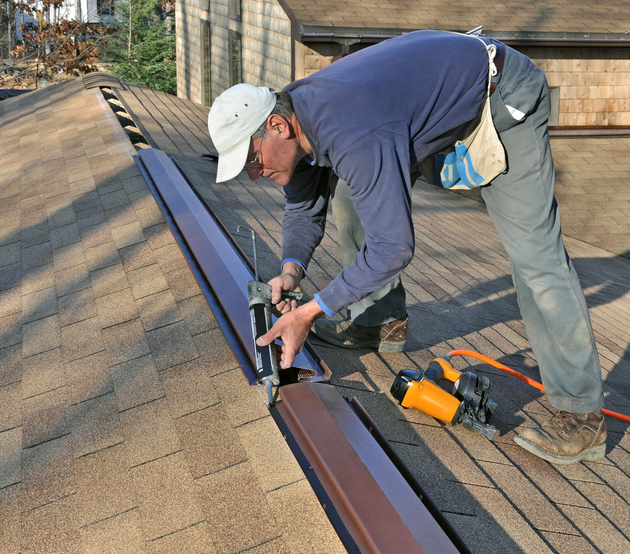If you’ve ever gone into your attic to retrieve some luggage, holiday decorations, or out-of-season clothes, you know how hot it can get up there. When heat can’t escape, especially in our humid Chicagoland summers, moisture can build up in your attic, causing damage and promoting the growth of mold. The professionals here at Maertin Heating and Cooling know that the way to prevent your attic from reaching high temperatures and gathering moisture is by having a climate balanced attic.
You can get a balanced attic by installing soffit vents where cooler air can enter, and ridge vents where warm air is released.
Soffit vents are installed underneath the eaves of your roof. These ventilation devices allow outside air to enter your attic, circulating cooler air into your attic. A ridge vent is an air exhaust vent running parallel to the peak of your roof, providing an outlet for air to escape from your attic. This air flow helps to keep the attic and roof cool, which avoids condensation build-up and prevents heat and moisture damage in the future.
This circulation of air helps to:
- Regulate temperature: Keeps your roof cooler in the summer and warmer in the winter, and regulates temperature extremes between floors
- Prevent damage: Extends the life of your shingles, prevents ice damming, and avoids condensation build-up. Moisture buildup can cut the life of your shingles in half.
- Resist weather: Keeps out wind-driven rain and snow.
- Improve your home’s air quality: Stale air goes out when fresh air comes in.
Cost savings
Perhaps most importantly, soffit and ridge vents can save money. This system reduces energy costs and the strain on your air conditioning unit. For example, in summertime, the sun can heat up your roof to well over 100˚F. This means heat in your attic – and house – won’t escape, and your air conditioning will run a lot more to cool your home, bad for the environment and your wallet. Ridge vents are able to vent that hot air from your attic, reducing the amount of heat that gets trapped inside and reducing the amount of energy – and money – you use to cool your house in the summer.
When to have a ridge vent – when not to
When choosing a ridge vent, it’s important to consider your roof slope. The slope is calculated by measuring the rise of a roof rafter for every 12 inches of level run. Think of a triangle with the flat base being the level run and the sloped angle being the pitch. For example, a 12/12 pitched roof would be a 45-degree angle.
Hip roofs do not work well with roof ridge vents, but gable roof designs with ridge vents are very successful. Ridge vents work well with a clear roof line but are not as advantageous in roofs with multiple levels and complex designs. Homes with a shallow pitched roof could incur water damage during heavy rains, deep snow or high winds if ridge vents are installed. Balancing the air temperature in your attic can improve the comfort, air quality and energy costs for your home. When you have concerns about the temperature in your home, send us a message. We’ll be happy to help.



